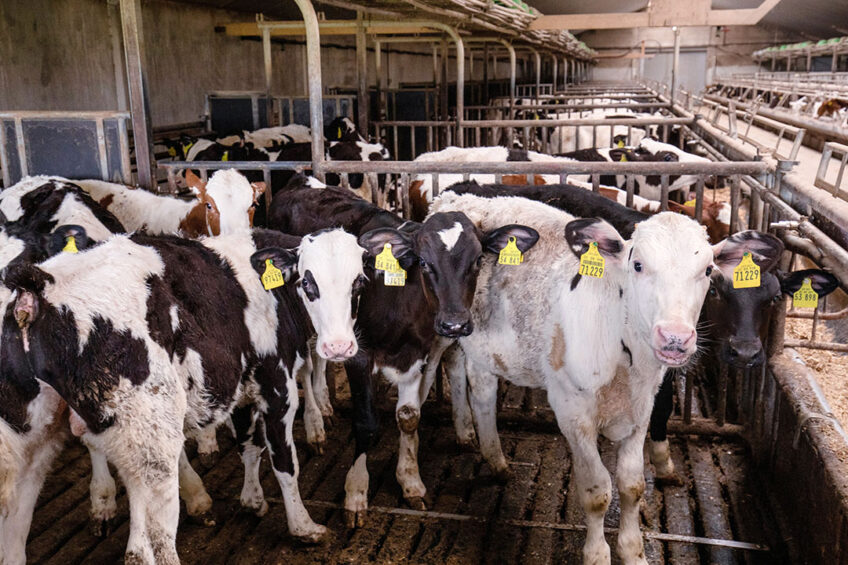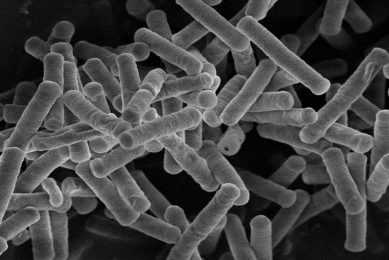Improving the health of newborn calves with probiotics

A recently published study found improvements in rumen development and the health status of newborn Holstein calves supplemented with compound probiotics.
Newborn calves are sensitive to environmental changes and colonisation by opportunistic and potentially pathogenic bacteria, which may lead to high morbidity and mortality. An early feeding regimen and nutrition have effects on rumen development and the establishment of rumen microbiota. This effect could persist for a long time and, consequently, affect the lifetime productive performance and health of adult ruminants.
Probiotics are extensively used as feed additives due to the potential positive effect of establishing a protective microflora in the gastrointestinal tract of calves. Lactic acid bacteria have been identified as a tool that can be used to maintain intestinal microbial balance and prevent the establishment of opportunistic pathogenic bacterial populations. Bacillus species are believed to reduce pathogen colonisation by activating key survival pathways and stimulating the immune system in epithelial cells. However, the effects of probiotics on the growth and health of calves are inconclusive and frequently driven by differences in probiotic species, viable probiotic bacterial numbers, and administration methods. Administration of an inoculum formed by a mixture of different strains may be an effective way to achieve a relatively stable effect on calves. Driven by these factors, researchers from the University of Tennessee and China Agricultural University administered an inoculum formed by a mixture of different strains to neonatal Holstein calves.
The compound probiotics study
This study investigated the effects of compound probiotics (consisting of 108 cfu/g of Lactobacillus plantarum, 108 cfu/g of Pediococcus acidilactici, 108 cfu/g of Pediococcus pentosaceus, 107 cfu/g of and Bacillus subtilis) on rumen fermentation, health status, and the growth performance of Holstein calves during the first three months of age.
48 newborn calves were randomly divided into the following 3 groups:
Control (CON): both milk replacer and starter pellets supplemented with no compound probiotics
LP (low compound probiotics): milk replacer supplemented with 0.12 g of compound probiotics per head per day, and starter pellets supplemented with 0.05% compound probiotics
HP (high compound probiotics): milk replacer supplemented with 1.2 g of compound probiotics per head per day, and starter pellets supplemented with 0.05% compound probiotics
Rumen fermentation
Diet supplemented with compound probiotics altered rumen fermentation, indicated by reduced rumen acetic acid and propionic acid, and the increased production of butyric acid, which is the main energy resource of the rumen wall, suggesting that the compound probiotics improved rumen development. The increase in production of butyric acid was attributed to the numerically higher abundance of bacteria Prevotella bryantii in compound probiotic groups. Prevotella bryantii is one of the bacteria that play vital roles in degrading fibre or starch. However, no significant differences in the concentrations of iso-butyric acid, iso-valeric acid, valeric acid, and total VFA were found. Total protein, including immunoglobulins and non-immunoglobulin serum proteins, correlates with the immune system of animals.
Oxidative biomarkers
Oxidative biomarkers are usually used as indicators of the physiological and health status of an animal. Immunity activities increased in the HP group, supported by the increased concentrations of serum total protein and immunoglobulins at age 40 days, and by the increased activity of superoxide dismutase at age 80 days; indicating that diet supplemented with HP improves the antioxidant capacity. The reason may be that the compound probiotic used in this study contained Lactobacillus plantarum, which contains a remarkable level of glutathione, which helps degrades hydrogen peroxide, and scavenges reactive oxygen species.
Faecal score and veterinary treatments
Diet supplemented with compound probiotics improved the health status of calves, indicated by the lower faecal score at 3 weeks of age and reduced medical treatments (Table 1). Diarrhoea in preweaning dairy calves is associated with morbidity, malabsorption, and poor production performance later in life.
Studies show that acute diarrhoea is the primary issue for the first 3 weeks of life and this is replaced by respiratory disease by around 4 weeks. In this study, at 3 weeks, the diarrhoea rates in the control, LP, and HP groups were 10.71%, 0.89% and 0.89%, respectively. Overall, the medical treatments of the control, LP, and HP groups were 13, 4, and 5, respectively; compared with the control group, the medical treatments of LP and HP groups decreased by 69.2% and 64.5%, respectively.
In this study, the diarrhoea of calves was at an average of 5.95%, which was generally lower than that in other studies, suggesting that the environment and management of the experimental farms were in very good condition. As a result, the researchers speculated that the improvement effect of compound probiotics will be even greater in farms with poor environmental and management conditions.
Growth performance
The weight gain was approximately 6.2% higher for the calves in the high compound probiotics (HP) for the total period of 3 months, compared to the probiotics-free group. In addition, calves in the high compound probiotics diet had slightly improved intake (DMI) and feed efficiency during the 3-month period of the study. Contrary to previous studies, the body size measurements did not show significant improvements with the supplementation of compound probiotics.
In summary, although supplementation with high compound probiotics did not result in significant improvements in body size measurements, this level of probiotics is recommended to improve the rumen development and health status of newborn Holstein calves. In addition, understanding the principles that regulate short and long-term microbial colonisation inside the digestive tract is essential to the success of microbiome-based therapies using beneficial microorganisms.








